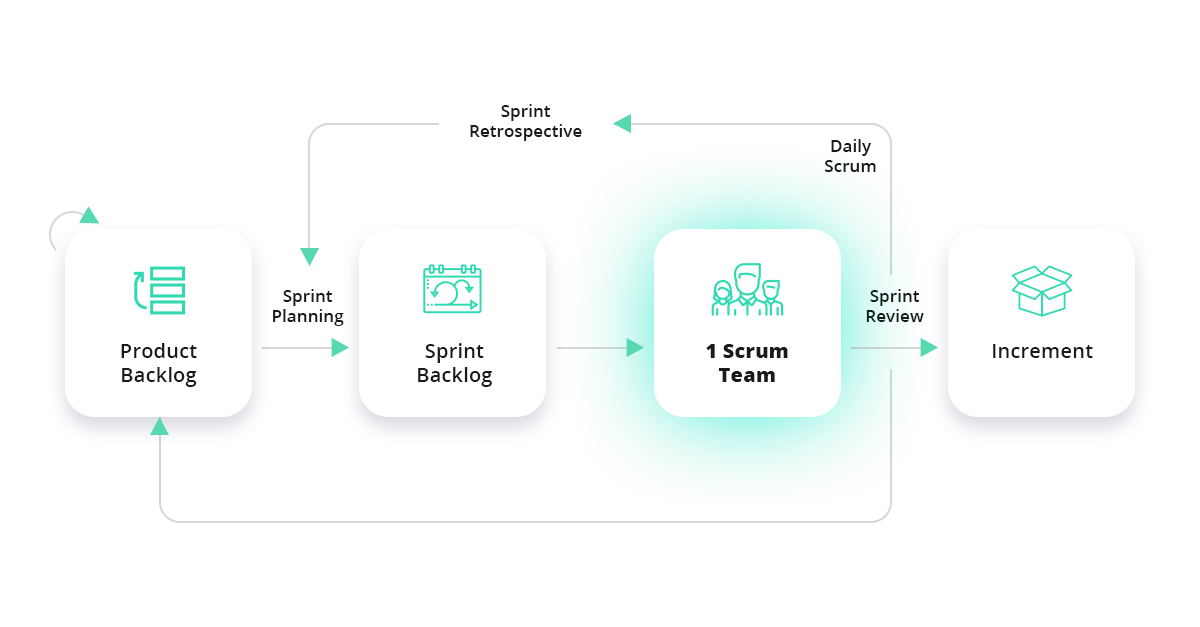Sprint 0 – our best practices

Sprint Zero is the initial Sprint in the new software development project, or … is it? In fact, Sprint 0 doesn’t exist in Agile methodology and Scrum framework. The following article will help you understand this controversial process and its value.
What is Sprint 0 in Agile methodology?
Agile splits the project management process into easily manageable sections called Sprints. Every Scrum Sprint must be delivering value and reach a certain goal in 1-6 weeks. Once a Sprint begins, no changes can be made unless Scrum Master and Product Owner decide so. During this time, an assembled development team is trying to create a particular piece of functional code that is ready to be tested and used. When one sprint ends, the backlog is updated so that the process can start again until the software development is done and the product is ready for release.

Although Sprint 0 doesn’t officially exist in Agile methodology and Scrum framework, many professionals believe that this time is crucial to product success in the end. However, there are two opposite approaches to this topic. Some Sprint Zero enthusiasts describe it as a stage in which a new development team works on a clear goal to set up the foundations and build an environment for the whole project. On the other side, there are software developers that perceive it as a major mistake. In their opinion, Sprint Zero is the initial Sprint that should focus on the same principle as any other Sprint – developing functional code.
What should be done in the first Sprint?
Pre-planning is an essential part of any project management. Standard preparations for the product development process include gathering the team and necessary equipment. Many Scrum professionals believe that those steps should take place during Sprint 0, while others perceive it as a wrong approach. They bring to attention the point of the Scrum framework – delivering value in fast, iterative cycles. How those different approaches affect the work scope for Sprint Zero?
SPRINT 0 AS PREPARATION STAGE
Although Sprint 0 is one of the shortest sprints in the whole project, it has an extensive work scope. Its main goal is to prepare the entire architecture and environment for future software development. In this approach, the deliverables of a Sprint Zero should be as follows:
- Infrastructure set up,
- product backlog creation,
- architecture planning,
- test plan preparation,
- story mapping,
- prototyping,
- design,
- tests validation,
- few first lines of code;
SPRINT ZERO AS THE FIRST SPRINT IN THE SCRUM FRAMEWORK
According to this approach, the main goal of a Sprint 0 is to deliver the first version of the product that the team could demonstrate. It wouldn’t be possible without creating the project’s skeleton and developing multiple user stories (some should be prepared in the backlog before Sprint Zero). At this point, the design is as minimalistic as possible. It is important to keep low velocity and lightweight. In summary, during Sprint 0, the product development team works on:
- delivering functional code,
- a minimal environment,
- features and initial stories,
- a release plan,
- features implementation plan,
- product backlog update.
What is Sprint 0 value?
There are no one-size-fits-all ways to work, and that is why there is so much controversy around Sprint 0. Some believe that it goes against basic Agile principles and has no place in the Scrum framework, but in reality – there had to be a problem that led to a solution. Otherwise, Sprint Zero wouldn’t be created. In the Agile methodology and Scrum framework, project initiation isn’t well addressed. The challenge for the management is to kick-start the project. All Sprints are focused on delivering value, starting with Sprint 1. It is not possible without the proper amount of work in the product backlog or dedicated environment. Every team needs time to set up for success, so when the time comes for Sprint 1 planning, they are ready. It is the value of Sprint 0.
Sprint Zero provides time and space to ensure that the foundations are done right from the beginning. It saves the management from repeating the same mistakes and secures success in the future. The main benefit of first Sprint is that team members can get guidance and clarity before software development begins. It helps them build confidence and better self-organize, leading to a high level of efficiency throughout the project. Sprint Zero helps to avoid slowing down during the critical stages of a project by offering an opportunity to plan a solid framework and ensures a great working environment.
Sprint 0 carries undeniable value when used correctly. It is not the solution for every software development team, every project, or every company. Sprint Zero, just like Agile methodology, has its place in particular conditions.
When is Sprint Zero the most useful?
Sprint 0 is beneficial for every development and management team that is not familiar with Agile methodology and Scrum framework. It allows them to get a Scrum crash course that won’t thread project success. During Sprint 0, all Agile events are happening for the first time. The team is getting familiar with the daily meetings, Sprint planning, product backlog updates, Sprint retrospective, Sprint Review, and Sprint backlog. In the Sprint 1 team will have a greater understanding of every event, and they will be able to use it to their advantage.
Well-integrated teams that are very efficient may never need a Sprint 0. Newly created, project-oriented teams can use Sprint Zero as a perfect time to set up communication and find a rhythm that may be crucial to the product’s development success. It gives an opportunity to go through forming, storming, norming, and performing phases early on.
Sprint Zero helps understand Agile principles of software development and apply them to operational business culture. It is a valuable solution that can and should be tailored to the particular needs of the project, team, and company.
contact us
Need expert guidance on your next energy project?
Reach out to us and discover how Codibly can offer tailored solutions to drive your business.